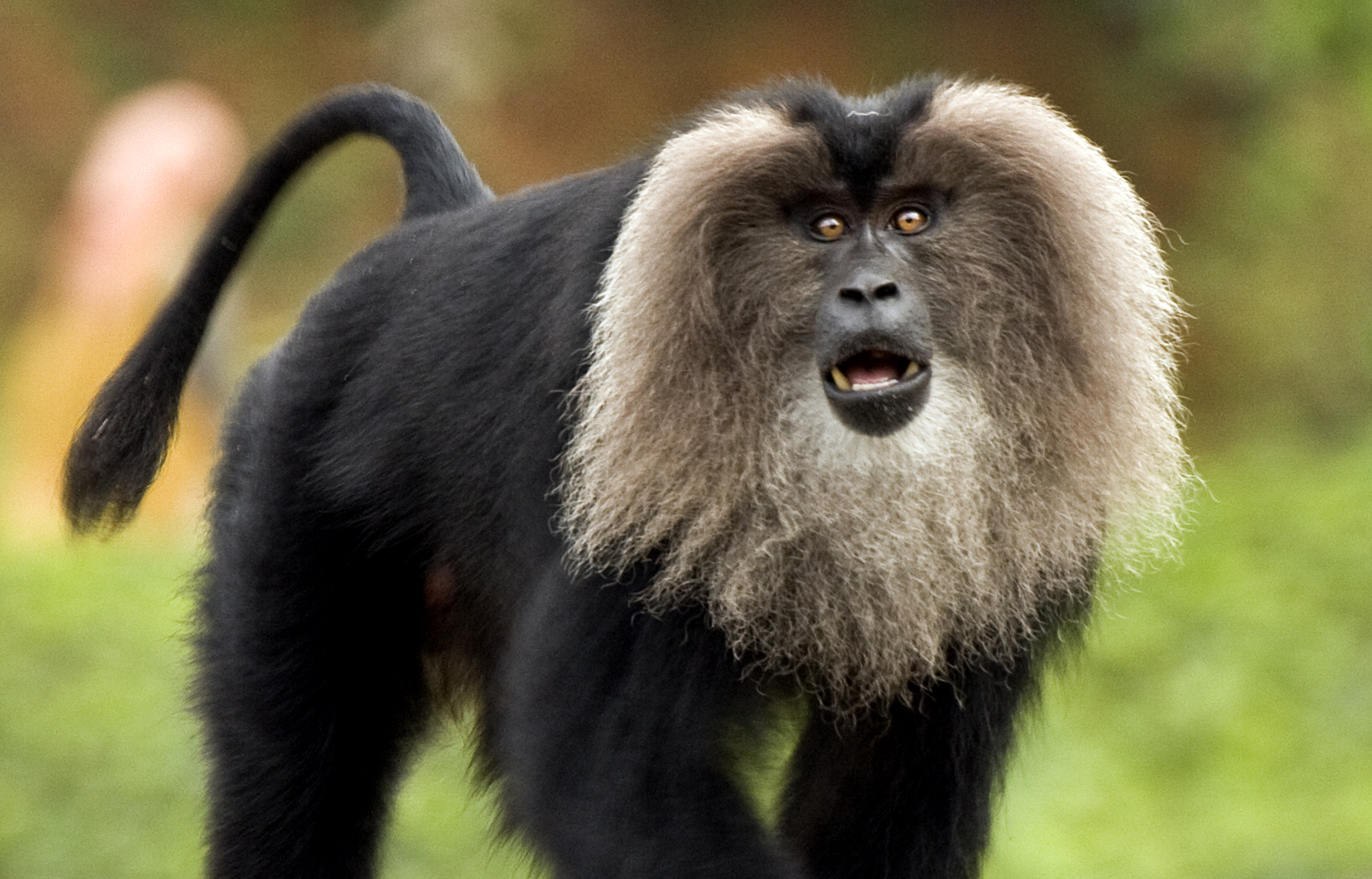Lion-Tailed Macaques | 21 May 2024
Why in News?
Recently, the adaptation of the lion-tailed macaque (Macaca silenus) to Valparai's urban settings underscores the intricate relationship between wildlife and human activity, necessitating conservation measures.
What are the Key Characteristics of Lion-Tailed Macaques?
- Key Features:
- One of the smallest macaque species, it weighs 2–10 kg, has a body length of 42–61 cm, and a 25 cm tail with a black tuft more pronounced in males.
- The lion-tailed macaque's black hair, except for its distinctive light-coloured mane around its head and chin, earns it the nickname "beard ape."
- Known as “the wanderoo,” lion-tailed macaques are solitary and shy, staying within their familiar range in hierarchical groups of 10 to 20 members.
- Dominant males of the group emit loud, human-like ‘whoops’ to alert outsiders entering their territory.
- Habitat:
- This primate is native to the fragmented rainforests of Karnataka, Kerala, and Tamil Nadu in India's Western Ghats, with approximately 2,500 mature individuals remaining.
- The Valparai plateau, with its vast tea and coffee estates interspersed with forest patches, is part of the Anamalai Tiger Reserve and home to one of the 40-odd populations of lion-tailed macaques in the Western Ghats.
- Lion-tailed macaques, living mostly in the upper canopy of tropical moist evergreen forests, primarily feed on fruits and seeds but also consume leaves, buds, insects, and small vertebrates, thereby supporting their ecosystem's health.
- This primate is native to the fragmented rainforests of Karnataka, Kerala, and Tamil Nadu in India's Western Ghats, with approximately 2,500 mature individuals remaining.
- Conservation Status:
- IUCN Red List: Endangered
- CITES: Appendix I
- The Wildlife (Protection) Act, 1972: Schedule I
- Threats and Issues:
- The primary danger lies in the loss of their rainforest home, with up to 99% of Macaques' original territory vanishing due to extensive deforestation for timber, agriculture, and urbanisation.
- Behavioural shift towards human settlements, driven by a scarcity of natural food, habitat degradation, increased human activity, and poor waste management.
- Mitigation Measures:
- The Nature Conservation Foundation (NCF) has developed canopy corridors and implemented regulations to curb feeding and safely guide macaques across roads, aiming to lessen their reliance on human settlements and reduce roadkill incidents.
- The Tamil Nadu government has announced the establishment of a Tamil Nadu Endangered Species Conservation Fund with a corpus of Rs. 50 crore, which includes conservation efforts for the lion-tailed macaque.
- The Tamil Nadu Forest Department plans to conduct a study to estimate the macaque population and devise a comprehensive conservation strategy.
UPSC Civil Services Examination, Previous Year Questions (PYQs)
Prelims
Q. Which one of the following groups of animals belongs to the category of endangered species? (2012)
(a) Great Indian Bustard, Musk Deer, Red Panda and Asiatic Wild Ass
(b) Kashmir Stag, Cheetal, Blue Bull and Great Indian Bustard
(c) Snow Leopard, Swamp Deer, Rhesus Monkey and Saras (Crane)
(d) Lion-tailed Macaque, Blue Bull, Hanuman Langur and Cheetal
Ans: (a)
Q. With reference to India’s Desert National Park, which of the following statements are correct? (2020)
- It is spread over two districts.
- There is no human habitation inside the Park.
- It is one of the natural habitats of Great Indian Bustard.
Select the correct answer using the code given below:
(a) 1 and 2 only
(b) 2 and 3 only
(c) 1 and 3 only
(d) 1, 2 and 3
Ans: (c)


